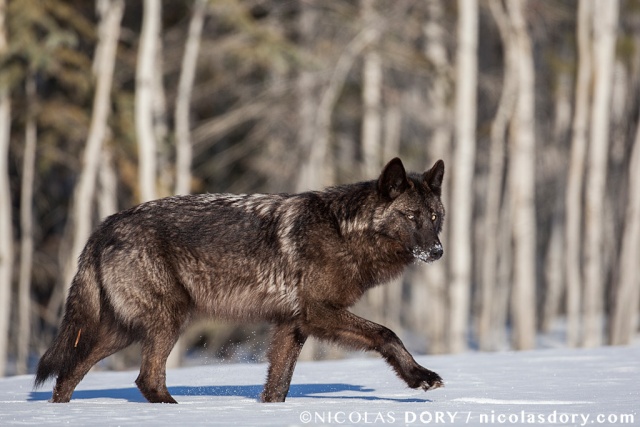❋
IntroductionThere are many different types of wolves in the world, extending far beyond the common grey wolf, each with their own characteristics that separate them from each other.
❋
Eurasian vs North American WolvesWolves as a species are incredibly varied, with each subspecies bearing a distinct appearance in its bone structure, skull morphology, and coat. However, the greatest and most notable difference is between the North American and European subspecies. Here is a brief comparison between the two:
Eurasian▸ Shorter, coarser fur with less soft wool
▸ Narrower heads
▸ Longer, higher-placed ears
▸ Longer legs
▸ Muzzle is often shorter
▸ Narrower feet
North American▸ Fur is longer and comparatively fine, with much more soft wool intermixing.
▸ Shorter legs
▸ Rounder skulls
▸ More prominent stop
▸ Shorter ears that are wider at the base and somewhat conical in shape
▸ Typically lacks a black mark on the forelegs, which is commonly seen in Eurasian wolves
This is a general comparison and varies vastly depending on the subspecies.
❋
Alaskan Tundra Wolf (
Canis lupus tundrarum)
A large wolf subspecies, also known as the barren ground wolf, with a wide range in size for individuals. An Alaskan Tundra wolf may weigh anywhere between 80 to 176 pounds (36 to 79 kg) and stand between 29 to 37 inches (73 to 93 cm) tall. It is similar to the Great Plains wolf in skull and tooth morphology, but its snout and palate are narrower, and it possesses heavier dentition than the Yukon wolf.
Their fur is long, though not as long as the Eurasian Tundra wolf, and is commonly light-coloured or pure white, though some dark, even black, individuals occur.


❋
Archipelago Wolf (
Canis lupus ligoni)
Also goes by the names Alexander Archipelago wolf and Islands wolf. They are on the smaller end, with a typical weight range of 30 to 50 pounds (14 - 24 kg) and an average height of 24 inches (60 cm). An average length for an Archipelago wolf is 3 and a half feet from nose to tail (1.6 metre).
Archipelago wolves have short, coarse fur, often dark grey, black, or black-phase and commonly with lighter markings. Some individuals are cinnamon.

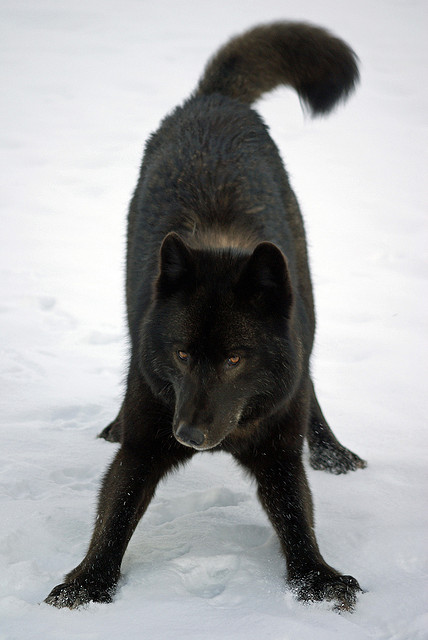
❋
Arctic Wolf (
Canis lupus arctos)
The Arctic wolf is a very hardy subspecies, being able to survive in harsh, subzero tundra conditions and last weeks without food. It is common knowledge that an Arctic wolf's has a thick, fluffy and insulating coat, typically white or off-white in colour. They come in other colours too, such as grey though this is much less common than the white coat. In fact, when an Arctic wolf is born, its fur is grey and gradually becomes lighter as it ages. Usually by the time the wolf is five years old, it has a white coat that can camouflage the animal in the snowy environment.
They are medium-sized wolves, standing 25 to 31 inches at the shoulder (or 63 to 78 cm) and with most individuals having a weight of 99 to 154 pounds (45 - 70 kg). Some Arctic wolves even reach 176 pounds. (79 kg) The average length range is 3 to 5 feet, or .91 to 1.52 metres.
Their smaller ears and shorter muzzles distinguish them from other wolf species, along with their very long, bushy tail.
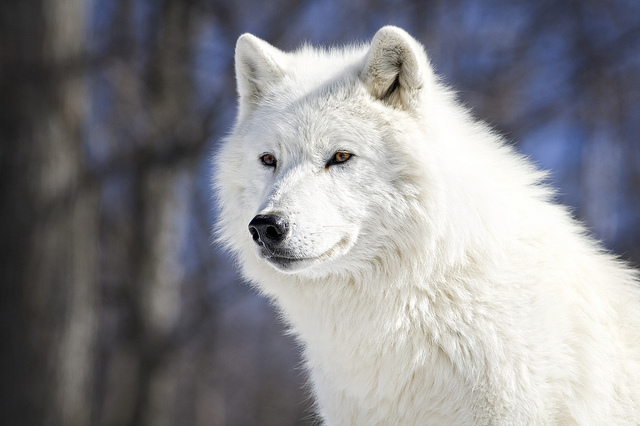
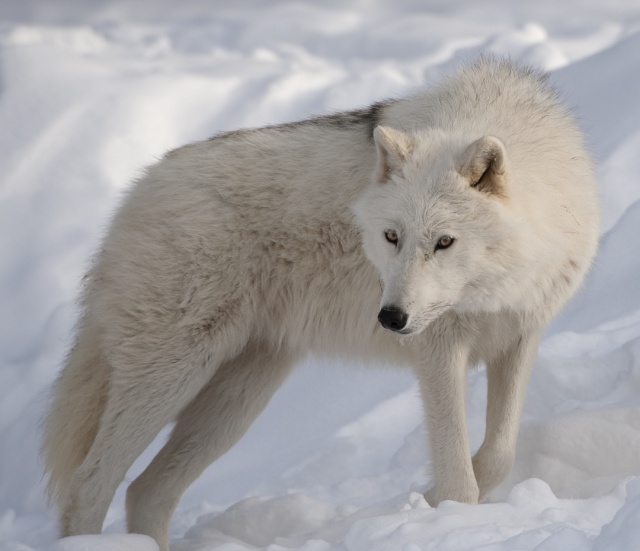
❋
Eastern Timber Wolf (
Canis lupus lycaon)
Also known as the Great Lakes wolf, eastern wolf, Algonquin wolf, or deer wolf. The eastern timber wolf is a lightly built, medium-sized wolf. They have a typical height ranging from 25 to 36 inches (63 to 91 cm) and weighing anywhere between 50 to 100 lb (22 to 45 kg). The average length is 5 to 5 and a half feet (1.5 meter to 1.67 meter) long from the tip of the nose to the end of the tail. Due to their size, they typically predate on small-to-medium prey such as white-tailed deer and beavers, with the occasional moose.
The eastern timber wolf is typically colored grizzled grey-browns with cinnamon and red-brown tones mixed in. Coats that are fully or mostly black are unheard of, with such specimens being mixed of other wolf species.
Their taxonomic history and identity is a subject of debate. Some believe that the eastern timber wolf is a subspecies of the grey wolf, others believe that it is the same as the red wolf, and still others who say that it is its own unique species. Some even say that the eastern timber wolf is the result of wolf-coyote hybridisation.
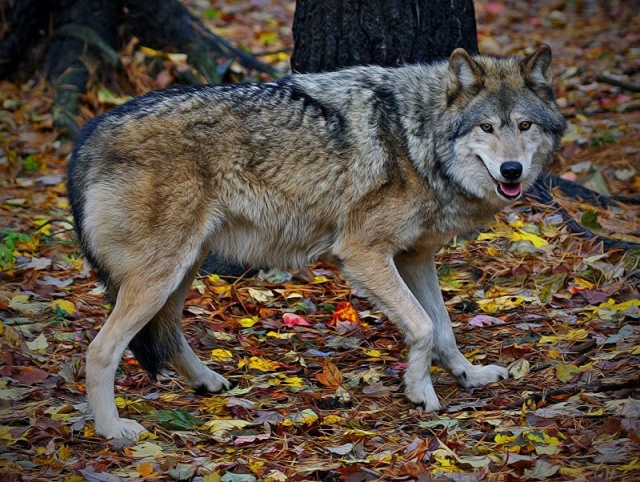
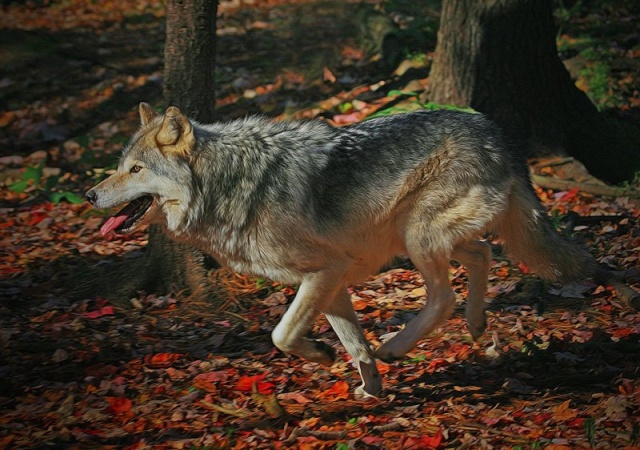
❋
Eurasian Wolf (
Canis lupus lupus)
Also known as the common wolf, European wolf, and Middle Russian forest wolf. It is one of the most common wolf subspecies in the world and has the largest range. They are a very large subspecies, one of the largest, in fact. Most Eurasian wolves weigh 70 to 130 pounds (31 to 58 kg) but many individuals have been found that weighed between 152 to 176 pounds (68 to 79 kg). They are 30 to 39 inches (76 to 99 cm) tall at the shoulder. Eurasian wolves vary in size depending on geographical location. The ones found in the Northern wilds are bigger and heavier than the ones found in Europe.
Their coats are shorter than their Western cousins, but also denser, as well as coarser-feeling. They have widely-variable colours, ranging from white, cream, grey, brown, and black, often a mix of the colours. Wolves from central Europe are often more richly-toned than the ones from northern Europe. Melanists, albinos, and erythrists are rare, and if they do occur, the individual in question is often a wolf-dog hybrid.
The howl of a Eurasian wolf is far more protracted than that of a North American wolf, with a more melodious sound. North American wolves have a louder howl that places more emphasis on the first syllable. They are mutually intelligible, however, as North American wolves have been shown to respond to Eurasian-style howls.
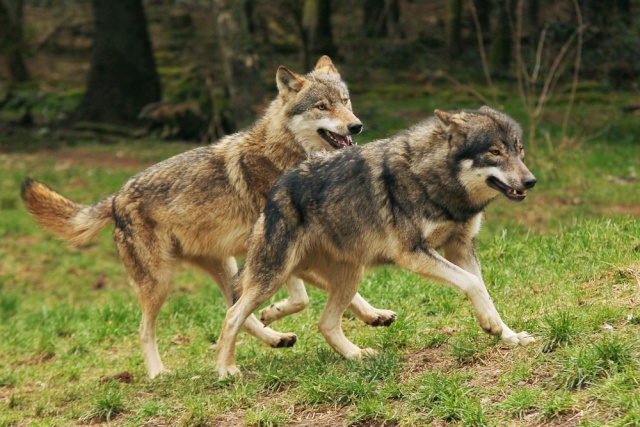
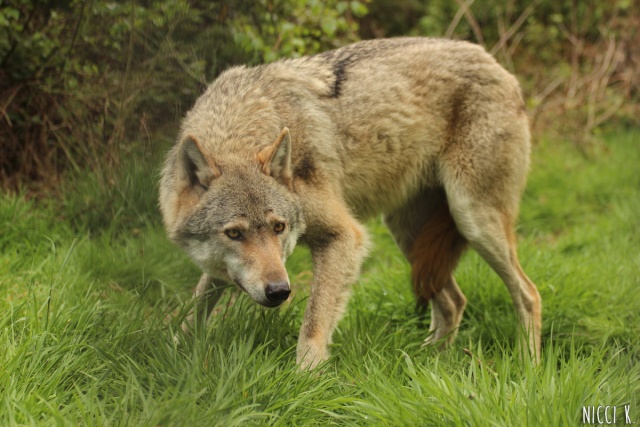
❋
Great Plains Wolf (
Canis lupus nubilus)
Also known as the buffalo wolf, plains wolf, and dusky wolf. It is the most widespread wolf subspecies, along with the Mackenzie Valley wolf. The great plains wolf is a medium-to-large subspecies. Most have a weight between 60 to 110 pounds (27 to 49 kg), though some exceptionally large individuals have weighed up to 150 pounds (68 kg). The average height ranges between 26 to 32 inches (66 to 81 cm) and typically have a length of 4.3 to 6.8 feet (1.3–2 m).
The colour of the fur is very variable, typically a blend of brown, grey, black, buff, and red. Most individuals have a fairly light coat, though black specimens do occur.
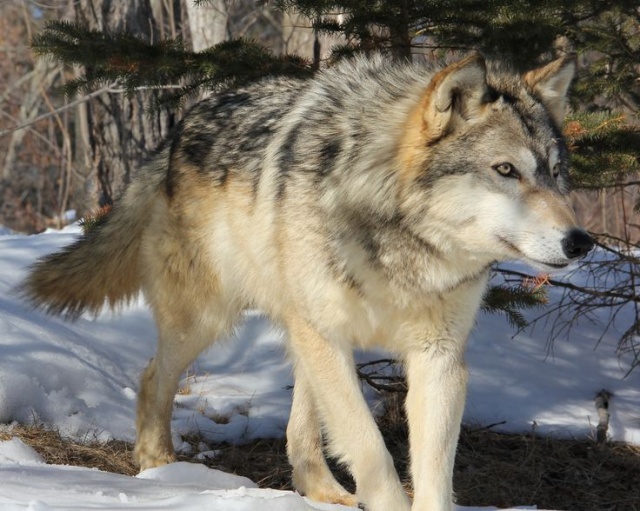

❋
Hudson Bay Wolf (
Canis lupus hudsonicus)
A medium-sized subspecies, measuring 28 to 36 inches (71 to 91 cm) tall on average, often 4 to 5 feet (1.21 to 1.52 m) long. They can weigh anywhere from 80 to 140 pounds (36 to 63 kg). In appearance, they are somewhat similar to an arctic wolf, but are slightly lighter and have a flatter skull.
They have a thick, bushy coat that is white, cream, or silver in colour. There is often some brown in their coats, and they typically have very dark eyes. Another similar subspecies would be the Mackenzie Valley wolf, but the Hudson Bay wolf is smaller and lighter-furred.
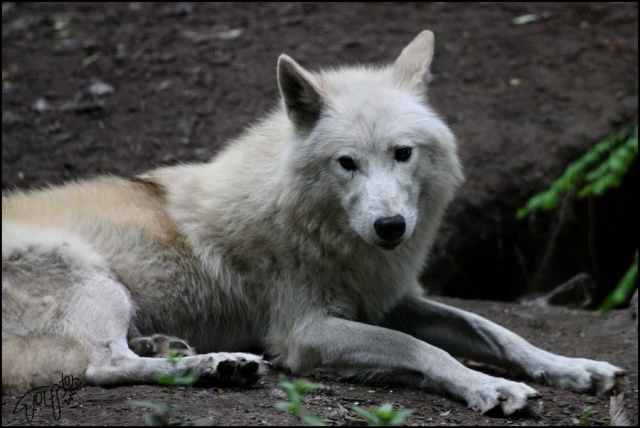
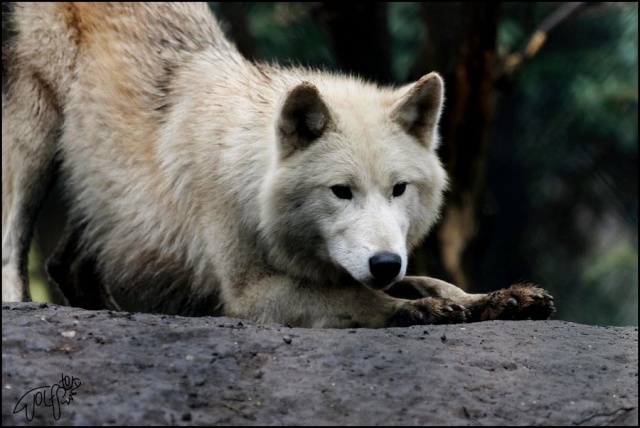
❋
Iberian Wolf (
Canis lupus signatus)
The Iberian wolf is not a large subspecies, one of the features that distinguish them from the more common Eurasian wolf. They are of slighter build, with most individuals weighing between 55 to 90 pounds (25 to 41 kg) and being 25 to 29 inches (63 to 73 cm) at the shoulder.
Most individuals have relatively short fur, and it varies in colour from grey-brown to ochre to dark reddish brown. Iberian wolves have distinct dark vertical lines marking their front legs, dark marks on their tail, and white fur at the upper lips, which is where the subspecies name signatus (meaning "marked") comes from.
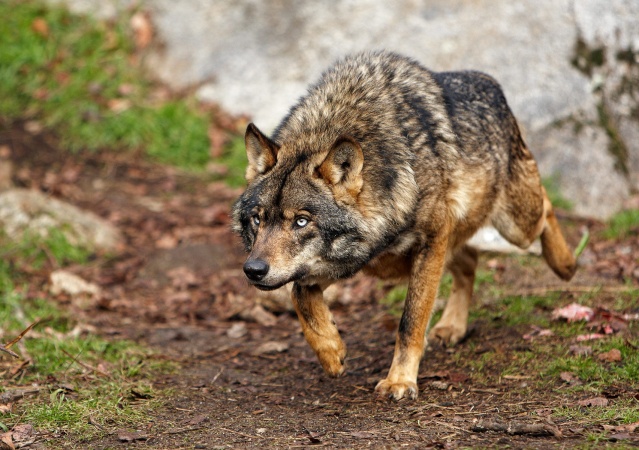
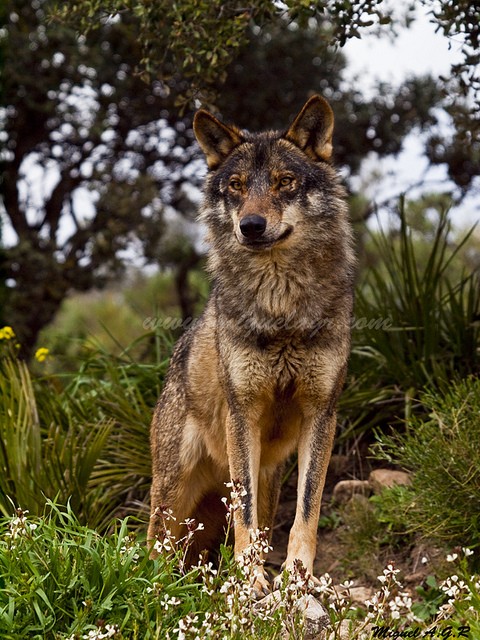
❋
Italian Wolf (
Canis lupus italicus)
Also known as the Apennine wolf. They are a subspecies on the smaller end, with an average weight of 53 to 77 pounds (24 to 35 kg), though some large individuals have weighed up to 88 pounds, or 40 kilograms. They stand at 23 to 27 inches (60 to 70 cm) and measure at 3.6 to 4.9 feet (1.10 to 1.50 m) long. They are lightly-built wolves.
The Italian wolf is a short-furred subspecies, with the colour most commonly being a mix of grey and brown that is known to become more rufous in the summer. They occasionally have dark, vertical lines of varying intensity marking their forelegs.
[color=#0000ee]


❋
Mackenzie Valley Wolf (
Canis lupus occidentalis)
Also known as the northwestern wolf and the timber wolf. The Mackenzie Valley wolf is a large wolf subspecies. In fact, it is one of the largest, with average individuals weighing from 100 to 154 pounds (45 to 70 kg). The heaviest Mackenzie Valley wolf on record was 175 pounds, or 79 kilograms. The average Mackenzie Valley wolf measures at 32 to 36 inches (81 to 91 cm) tall and 5 to 7 feet (1.52 to 2.1 m) long. They have long, powerful legs with allow them to travel very far and through rough terrain and harsh weather.
Compared to the Eurasian wolf, they have a more robust build, as well as a larger, rounder skull and a broader muzzle. Its ears are shorter and it has a bushier pelt. They have strong neck and jaw muzzles, ideal for taking down prey and cracking bones.
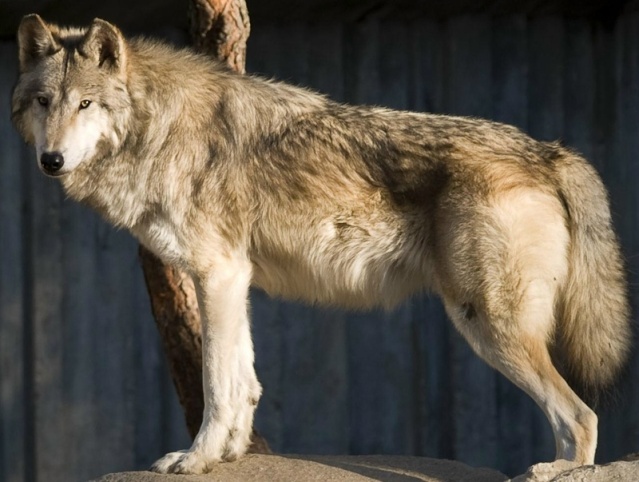
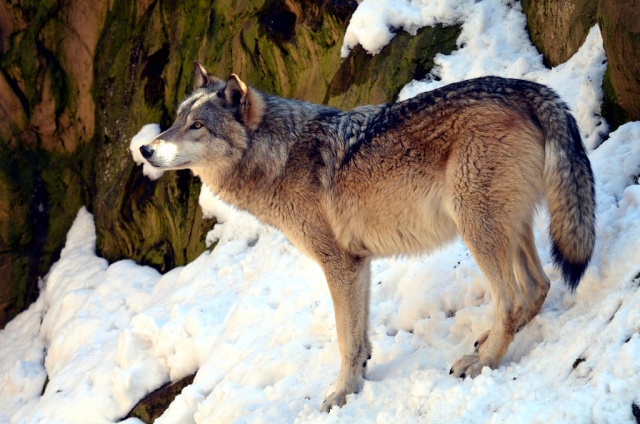
❋
Northern Rocky Mountains Wolf (
Canis lupus irremotus)
Known as the Northern Alpine wolf. They are a medium-to-large subspecies, with the majority of individuals having weights ranging from 85 to 150 pounds (38 to 68 kg) and standing 27 to 33 inches (68 to 83 cm) high. They are commonly built fairly heavily and hunt primarily big game, such as elk, bison, and deer. It is an opportunistic feeder, but for the most part, small species do not make a large part of their diet.
Compared to their southern counterpart, they are larger wolves, and possess lighter-coloured coats, with the fur containing more white and less black. In general, its coat will be light grey with white and some black mixing in. Their fur is long and thick and noticeably fluffy.
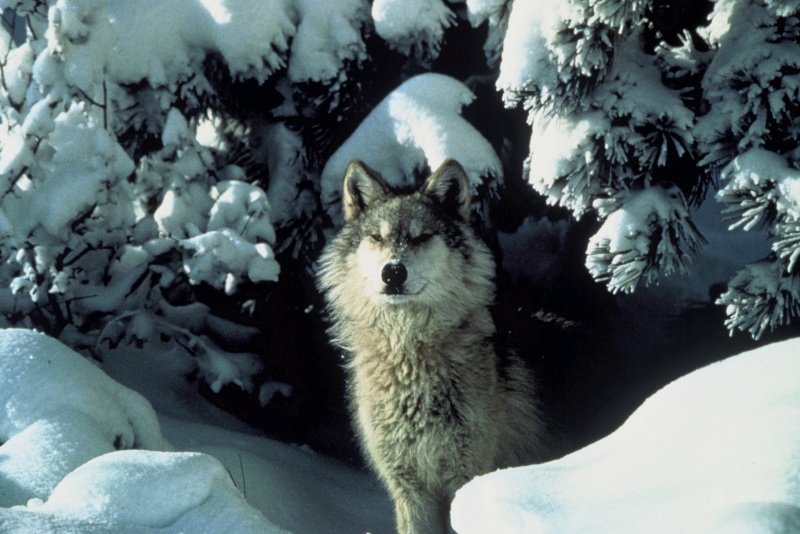

❋
Red Wolf (
Canis rufus)
Red wolves are smaller than grey wolves, and possess a more slender, elongated skull as well as shorter fur that is coarser in texture. Compared to the coyote, they are larger with a more robust build and have longer legs and larger ears. They stand at 24 to 27 inches (62 to 70 cm) tall and weigh 45 to 80 pounds (20 to 36 kg), which makes them intermediate in size between the grey wolf and the coyote.
Their fur is, indicated by the name, reddish in tone, with individuals primarily having fur that is red-brown or cinnamon. Light markings above the eyes are common.
Interbreeding with coyotes is very common, with many red wolves having coyote lineage.


❋
Southern Rocky Mountains Wolf (Canis lupus youngi)
Known as the Southern Alpine wolf. It is a medium-sized subspecies similar to the Northern Rocky Mountains Wolf, but smaller. They range from 80 to 125 pounds (36 to 56 kg) with most being around 90 pounds (40 kg). They are 26 to 31 inches (66 to 78 cm) tall.
Appearance-wise, they are much like the Great Plains wolf, having buff-coloured fur. In comparison with their northern counterpart, they have shorter, darker fur, often having black markings, especially on the back.


❋
Steppe Wolf (
Canis lupus campestris)
Also known as the Caspian (or Caspian Sea) wolf and Caucasian wolf. They are a medium-sized wolf subspecies, native to steppes of the Caucasus region and around the Caspian Sea. They may weigh between 77 to 88 pounds (35 to 40 kg) and typically measure 25 to 31 inches (63 to 78 cm) at the shoulder.
Their fur is short, sparse, and coarse, with the guard hairs on the withers normally not exceeding 70 mm and the tail poorly-furred. The steppe wolf is coloured light grey with rust and brownish tones blended in. Black hairs are often found mixed into the coat, typically along the wolf's saddle. Desert-like pigments are common, and individuals are very rarely white.
They are known to surplus kill, especially targetting seals.


❋
Tibetan Wolf (
Canis lupus chanco)
Also known as the
woolly wolf and the Himalayan wolf. It is a smallish subspecies that very rarely exceeds 99 pounds (45 kg), normally weighing 65 to 70 pounds (29 to 31 kg). They are 27 to 30 inches (68 to 76 cm) high and 4.8 to 5.4 feet (1.46 to 1.64 m) long. Compared to the Eurasian wolf, they are smaller in size with shorter legs. The shape of the skull is similar, but the Tibetan wolf has a longer, narrower muzzle.
True to the common name "woolly wolf", the Tibetan wolf has a long, shaggy coat, very fluffy in appearance. The colour is relatively pale, primarily light greys and dull browns, mixed with buff, white, and cream tones. Dark grey and black hairs can be found on the wolf's back, though often not very much. Some dark-furred individuals occur, but are much more uncommon than light-furred ones.
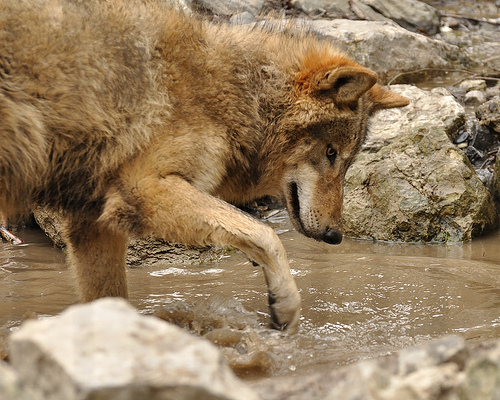
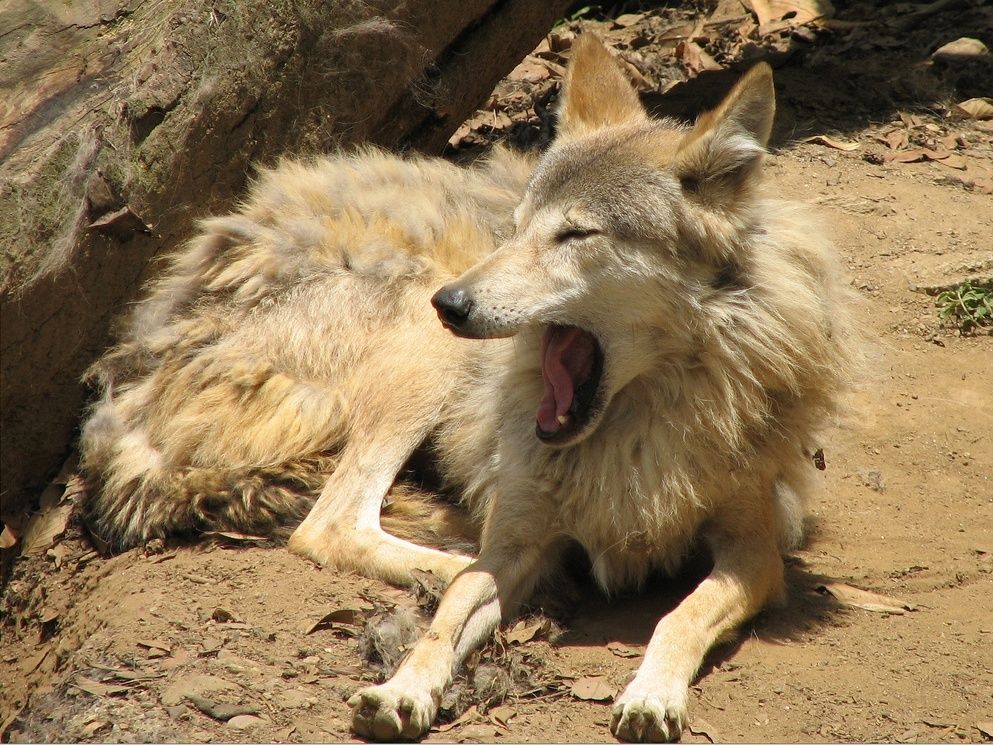
❋
Tundra Wolf (
Canis lupus albus)
Not to be confused with the Alaskan Tundra Wolf!A fairly large wolf subspecies, also known as the Turukhan wolf. They weigh 81 to 108 pounds (36 to 48 kg), with the heaviest individual on record weighing 115 pounds (52 kg). They measure anywhere between 28 to 38 inches (71 to 96 cm) tall. They aren't especially heavy wolves, but they are fairly tall.
They have very long coats with dense underfur, suited to keep them warm in a very cold, wintry environment. The colours are light, often a combination of white, grey, rust, silver, and a bit of black.
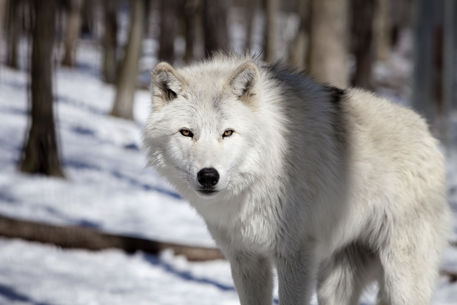

❋
Yukon Wolf (
Canis lupus pambasileus)
Also known as the Interior Alaskan wolf and autocrat timber wolf. It is one of the largest subspecies of wolf alive, if not the largest. The typical weight for a mature Yukon wolf is within the range of 150 to 200 pounds (68 - 90 kg). It often stands at 36 to 42 inches high (91 - 106 cm) and it is long-bodied, with a length ranging between 6 feet to 7 feet (1.82 - 2.13 metres). Its skull and teeth are larger than the Mackenzie Valley wolf.
Its fur is often dark, usually black with grey and brown markings, though grey or white pelts are not unheard of. Being inhabitants of a cold climate, they have a thick, warm coat to protect them from the elements.
